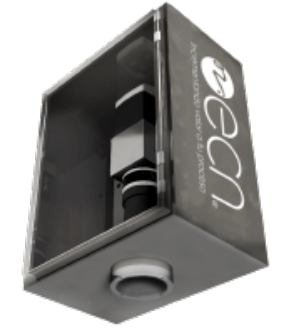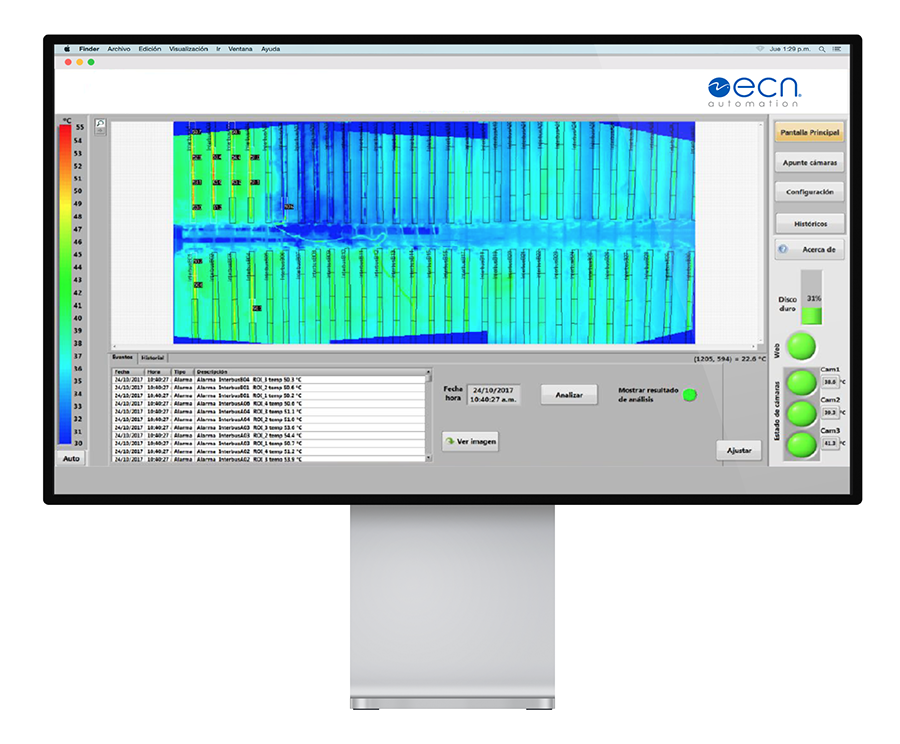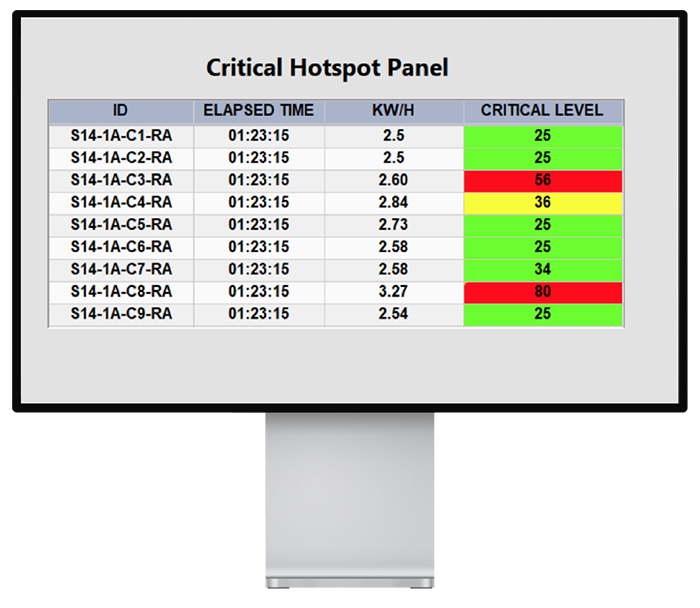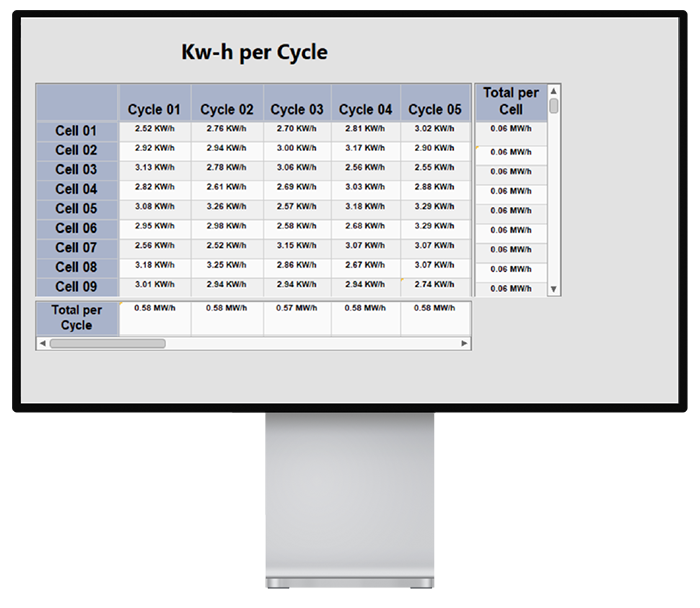 PRODUCTOS OPTIMIZACIÓN METALÚRGICA
PRODUCTOS OPTIMIZACIÓN METALÚRGICA
Sistema de detección de cortos en celdas de electrólisis

El proceso de electrólisis demanda una gran cantidad de energía por las altas intensidades de corriente utilizadas. La eficiencia del proceso corresponde a la relación que se establece entre el metal efectivamente depositado y el que debiera depositarse, de acuerdo con la cantidad de corriente eléctrica aplicada.
Esto hace necesario evitar:

ECN Automation ofrece la solución HotSpot Monitor la cual utiliza tecnología de visión termográfica para determinar la temperatura de cada celda y puntos de calentamiento anormales/críticos que se dan en este proceso. HotSpots Monitor funciona a base de cámaras sobre la estructura de la planta para monitorear continuamente las temperaturas en las celdas de electrólisis.
Esto brinda una solución eficaz en la detección de temperatura fuera del rango permitido que pueda ocasionar un eventual corto circuito, beneficiando al consumo eficiente de la energía requerida en el proceso, así como la seguridad en la planta.


El sistema puede integrarse mediante Modbus/ TCP, contando con diferentes protocoles de comunicación:

Modbus TCP/IP Ethernet/IP

Profibus DP

Base de datos que almacena temperatura, consumo energético, fecha y hora e imágenes termograficas al instante de detección. La información se visualiza en una interfaz gráfica, intuitiva e interactiva la cual brinda herramientas para crear reportes de forma rápida y fácil con un solo clic.

Interfaz que muestra gráficamente los niveles de criticidad según la temperatura y consumo energético de cada punto caliente, lo cual permite la creación de diferentes tipos de alarma según el nivel detectado.

Alerta de cambio de las barras interbus de las celdas, mediante una predicción del desgaste de estas, en base a sus registros históricos de puntos calientes de sus últimos ciclos de operación.
